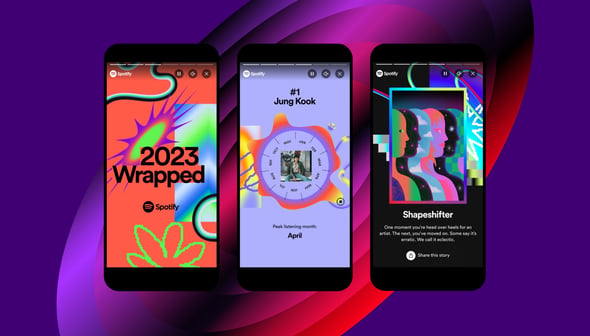In the digital landscape, personalized video content stands as a beacon of innovation, transforming the way brands connect with their audiences. This technique not only elevates engagement but also personalizes the marketing experience, making each viewer feel uniquely valued. Below, we'll navigate through five pivotal steps to craft personalized video content, illustrated with real-world brand examples.
1. Understand Your Audience
Know Who You're Talking To
To tailor content that resonates, you must first deeply understand your audience.
- Segment Your Audience: Break them down by demographics, behaviors, or preferences.
- Gather Insights: Utilize data analytics and customer feedback.
- Create Personas: Develop personas to guide content creation.
Example: Spotify’s “Wrapped” campaign brilliantly showcases personalized summaries of users' listening habits, leveraging data to create a deeply personal and engaging experience.

2. Set Clear Objectives
Define Your Goals
Clarify what you aim to achieve with your personalized video content.
- Determine Your Purpose: Be it boosting sales, enhancing brand awareness, or fostering loyalty.
- Choose Relevant Metrics: Select KPIs that will gauge your success effectively.
Example: Nike allows users to design custom shoes and then engages them with personalized videos showcasing their designs, directly linking personalization to increased customer engagement.
3. Craft Your Message
Make It Personal and Relevant
Personalization goes beyond using the viewer's name; it's about crafting a message that speaks to their interests and needs.
- Personalize the Script: Reference specific viewer data to make the script resonate on a personal level.
- Design for Engagement: Encourage interaction through relevant content.
4. Leverage Technology
Use the Right Tools
Choosing the right platform and tools is crucial for delivering personalized video content efficiently.
- Select a Video Platform: Pick one that supports personalization and integrates with your customer database.
- Incorporate Interactive Elements: Engage viewers with clickable CTAs.
5. Analyze and Optimize
Learn and Improve
Continuous analysis and optimization are key to refining your strategy.
- Monitor Performance: Review your video's performance regularly.
- Gather Feedback: Seek viewer input to understand preferences.
- Iterate and Refine: Use insights to improve future content.
Example: Airbnb’s “Made Possible By Hosts” campaign featured personalized stories from guests and hosts, using feedback and performance data to enhance storytelling techniques.
Conclusion
Personalized video content is more than a marketing trend; it's a powerful tool for creating meaningful connections with your audience. By understanding your audience, setting clear objectives, crafting a personalized message, leveraging technology, and continuously optimizing based on insights, you can create content that not only stands out but also resonates deeply with viewers. Brands like Spotify, Nike, and Airbnb have already demonstrated the profound impact of personalized video content. Now, it's your turn to harness this potential and transform your marketing strategy.
If you're interested in refining your videography skills for impactful brand storytelling, be sure to check out our blog 'Shoot Like a Pro: Quick Videography Basics for Impactful Brand Stories' to enhance your personalized video content creation journey."




